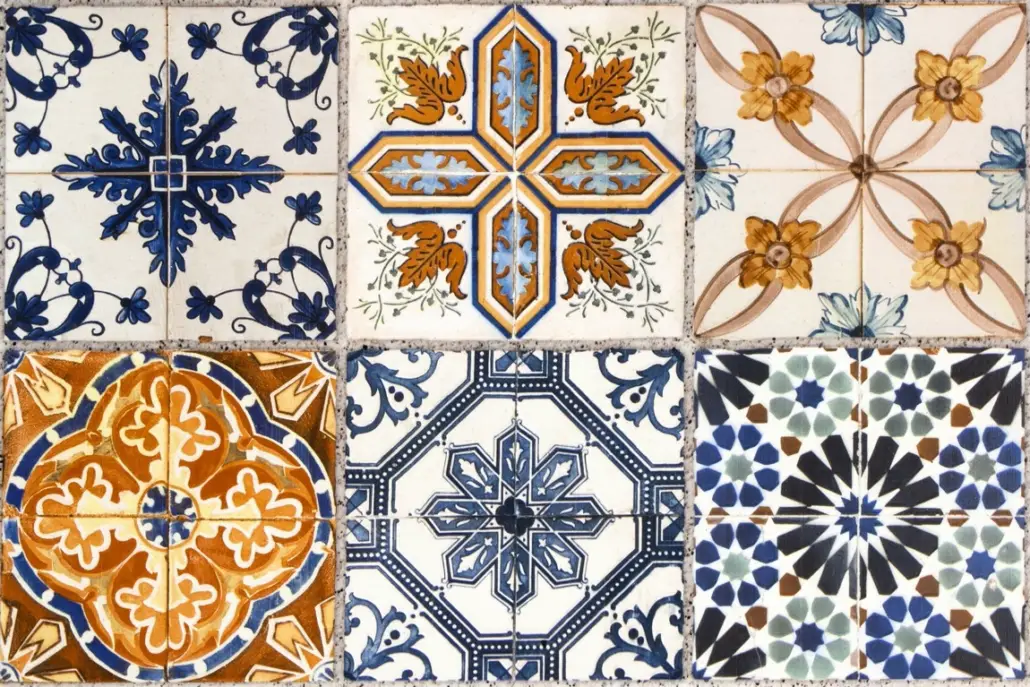Disadvantages of Porcelain Tiles

Many property and company owners are unfamiliar with porcelain tile because it is a relatively new type of ceramic tile. They are made with the same basic materials as ceramic tile floors, but they are stronger and have more benefits.
Porcelain tiles are so versatile that they may be used almost anywhere, including as a wall covering, a tabletop, a driveway, or a fireplace. It is also possible to mimic the look of natural materials like wood and stone with porcelain tiles. These coatings can aid in promoting biophilic design because they evoke images of natural materials.
Overview
Now more than ever, tiles are essential to any structure’s design and atmosphere. They have been a popular material for decades due to their versatility and ability to enhance an environment’s appeal. For instance, porcelain tiles have a great aesthetic appeal and are sturdy. However, the discussion goes much deeper than that.
Porcelain tiles have disadvantages, and even the best quality type has limitations. That ranges from their expensive cost and brittleness to difficulty to install and repair.
Porcelain Tiles

It’s a type of flooring baked at higher temperatures than normal ceramic tiles, making the clay very dense. Tiles made of porcelain are crafted from a mixture of clay and other natural elements before being baked in a kiln. Those who work with it praise its uniformity and impermeability.
That makes it a more stable choice among radiant heating options and a better fit for areas with inconsistent temperatures. Porcelain tile is available in the same depths as ceramic tile but is heavier. Some people choose it over ceramic tile because it comes in various styles and shapes.
What to Consider Before Getting Porcelain Tiles
The adaptability and longevity of porcelain tiles make them a great investment. If you’re set on porcelain flooring, it’s important to know what to look for before placing an order. The factors you should look for include the following:
1. Grade of Porcelain Tiles
One must first determine the category to which a given porcelain tile belongs. The abrasion resistance of a tile determines which of the five abrasion classes it belongs to. Tiles of Class 1 are not recommended for use on floors or in high-traffic areas. Instead, they should be installed on walls for decoration or in locations where the focus is on the decor alone.
Classes 2 and 3 are ideal for homes because they can handle a moderate amount of foot traffic. They do that while protecting them from abrasive debris, such as kitchens and bathrooms. Class 4 is great for a medium-sized business with moderate foot traffic. It is also often used in homes with areas with moderate to high foot traffic, such as entryways, hallways, and busy kitchens. Lastly, Class 5 is reserved for heavy-duty commercial and transport applications.
2. Type of Porcelain Tiles
One consideration when buying tiles is learning about the different varieties. With a wide selection of porcelain tiles, you can only choose the best one for your home after weighing the pros and cons of each type.
Tiles made of porcelain can be found in various finishes, including unglazed, glazed, and full body. Unglazed porcelain tile is great for the bathroom, outdoors, and other places where moisture tends to gather because it doesn’t slip. However, they need to be sealed after installation to prevent stains.
Even though you can use the finish of glazed porcelain tile in many different ways, this material is better for walls than floors. On the other hand, high-traffic areas benefit from full-body porcelain tile due to its sturdiness.
3. Installation
Because of their durability, you can only cut porcelain tiles with a specific saw. It is recommended to use a cement backer board as a base for this tough but fragile material. To keep your porcelain tiles from moving, you must also ensure they are well attached to the wall under and behind them. Remember that most glues work best when left to dry for the time the manufacturer suggests.
4. Cost and Value
When deciding on porcelain tile flooring, it is important to keep costs in mind. Even though hiring a professional to lay your tiles can increase your budget, their experience and understanding are usually worth it.
Porcelain tile may be more expensive than other options, but its value makes up for the extra cost by a long shot. You’ll enjoy porcelain tiles’ benefits throughout your time in the property, and potential buyers will see them as an asset when it comes time to sell.
5. Maintenance
Porcelain tiles are low maintenance, but they still need to be cared for properly to ensure they last for years. Do not use ammonia or bleach because these chemicals are very abrasive and could damage your floors. Also, when removing stains, never use steel wool or abrasive brushes.
Remember to seal the grout between the tiles once it has dried and set to keep dirt and grime from settling in there. If the grout hasn’t been sealed, clean it with vinegar, baking soda, and a soft-bristled toothbrush before rinsing it with warm water.
Disadvantages of Porcelain Tiles

There are many benefits to porcelain tile flooring, but can they compensate for the problems that come with it? Before settling on this flooring option for your house or business, it’s important to be aware of the following drawbacks:
1. Porcelain Tiles Are Heavy
Compared to ceramic tiles, porcelain tiles have a higher density. That’s great for some reasons, but it could be problematic in some settings, such as a bathroom on the upper floor. Porcelain tile flooring can support a lot of weight.
Ensure the subfloor and joists can handle the extra weight of this tile before having it installed in high-traffic areas like the upstairs of your home. Installers don’t like using heavy tiles because it takes more work to move them. Porcelain tiles have more pros than cons, but their weight is something to consider before buying and installing them.
2. Porcelain Tiles Are Hard to Install
Given its greater density, porcelain tile can be challenging to work with. The factors that make it long-lasting and durable make it tougher to cut through and arrange. Because porcelain tile is so dense, only the most skilled floor professionals should install it.
3. Porcelain Tile Repairs Are Difficult
Compared to ceramic tile flooring, porcelain is much more challenging to restore. Given the increased difficulty in working with these tiles, installers may charge more to make tile replacements. Because of this, porcelain tile flooring rarely requires maintenance over time. Since porcelain floor repairs aren’t as common as other hard flooring choices, they will likely have similar maintenance expenses.
4. They Are Very Expensive
Another issue with porcelain tiles is the cost, which can be a problem when funds are limited. They aren’t prohibitively expensive, but they cost more per tile to install than ceramic. Searching for the least expensive flooring material may lead you away from porcelain tile.
However, the flooring is expected to outlast cheaper choices by a significant margin, so that it may be a better bargain in the long run.
Although the flooring is more expensive initially, it has a much longer expected lifespan than cheaper alternatives and maybe a better deal in the long run. Consider the higher cost of porcelain tile floors if your budget is already tight, but don’t let that be the deciding factor.
5. Porcelain Tiles Are Harder to Cut
As mentioned earlier, cutting porcelain pavers requires more specialized equipment due to the material’s unusually hard and dense composition. A wet saw is typically used in addition to diamond blades for large-scale cutting jobs. Drill bits made from tough materials like porcelain are needed when making holes in tile floors. Also, one should take proper care to prevent tiles from cracking.
Porcelain Tiles vs. Homogeneous Tiles

Porcelain tiles can be further subcategorized into the homogeneous variety (full-body porcelain tile). Porcelain and ceramic tiles are the two most common types. When compared to ceramic tile, porcelain is denser and less porous. As a result, porcelain tiles can be used indoors and outdoors without deteriorating quickly.
Regarding water absorption, porcelain tiles have a much lower rate than ceramic ones. While ceramic and other non-porcelain tiles absorb more water than porcelain, porcelain will absorb less than 0.5%. The material used to create porcelain tiles is to blame for this. Because of its higher density, clay is less porous, making it ideal for building. In turn, this impacts the tiles’ characteristics and optimal applications.
Porcelain Tiles vs. Marble Tiles
Porcelain tiles can be used indoors and outdoors and are of great value. On the other hand, tiles made of marble, a porous natural stone, are best used inside. Marble tiles can be utilized as flooring in moderately trafficked areas. However, maintaining marble tiles takes more care and attention, making them pricey.
Porcelain Tiles vs. Vinyl Tiles
Aside from their benefits, porcelain and luxury vinyl tiles have many other things in common. Nevertheless, there are many instances in which the two are distinct. Because of these differences, one product is naturally better than the other in some ways.
But there are many factors to consider before making a final decision since it depends on your needs and preferences. The factors that distinguish the two include installation, maintenance, and functionalities. Either way, you should consider them as great options for various roles.
Porcelain Tiles vs. Granite
Just like marble, granite is a porous, moisture-absorbent stone. However, it must be properly installed and sealed before it can withstand moisture. As a material, porcelain is resistant to the effects of humidity. Because of this, porcelain tiles and pavers are often used in wet places like kitchens, bathrooms, and outdoor patios.
Porcelain Tiles vs. Vitrified Tiles
Porcelain tiles undergo an extra hardening process to increase their density and strength. On the other hand, the vitrification process gives vitrified tiles a glassy look and makes them very uniform and strong. Both porcelain and vitrified tiles can be used indoors or outdoors and withstand rough conditions. They also withstand scratches, impacts, acids, alkalis, and water.
Porcelain Tiles FAQs
Does Porcelain Tile Crack Easily?
No. Porcelain is among the strongest and most durable tile materials available. It’s harder than ceramic and vinyl but not nearly as hard as some natural stones, such as quartzite. The durability of porcelain ensures that it will serve its purpose well over time, whether installed at home or in a high-traffic facility.
What Is Better, Ceramic or Porcelain Tile?
Ceramic tiles are more porous compared to porcelain tiles because ceramic tiles are less dense. As a result, they are tougher, which makes them more durable and resistant to water absorption. Because of this, they are better suited to heavily trafficked regions.
Are Porcelain Tiles Hard to Maintain?
Traditional hardwood floors are hard to clean and require much effort to maintain, but porcelain tiles are easy to clean and can last for decades with little work. In addition to being beautiful and long-lasting, porcelain tiles need little maintenance. They don’t need additional sealing like other tiles to keep out water.
They aren’t completely waterproof but have a high resistance level, making them simple to maintain. Generally, porcelain tiles are among the easiest to clean and maintain compared to other types of flooring.
What Is the Lifespan of Porcelain Tile?
The durability of porcelain tile ensures that it will last for at least 60 years. You can use them indoors or outdoors since they look great on walls or floors. Porcelain tile is also great for homes and businesses because it lasts a long time and doesn’t cost much over its lifetime.
Why Do My Porcelain Tiles Always Look Dirty?
Chemical residue development is a frequent problem in flooring maintenance. Your floor will look unclean because of the chemicals left behind that attract dirt. You’ll need to scrub them off or eliminate them to fix them. Slippery floors are another potential hazard caused by this.
Which Tile Is Best for the Floor?
Porcelain floor tiles are one of our top picks for use in every part of the house, including the kitchen, the living room, the bathroom, and the hallways. That is because of their unparalleled strength, durability, affordability, and lifespan. Porcelain is a type of solid clay used to make floor tiles. When fired at high temperatures, porcelain can be made to look like stone, wood, and other natural materials.
Conclusion

Finding the ideal flooring for your facility or home can be challenging. However, with the help of an expert, you can feel more confident in your decision with a material that will be under your feet for the next decade or more.
Choose your flooring choice carefully and consult experts before making any purchases. Compared to other flooring options, porcelain tile floors are the most durable but cost more and take longer to install.


